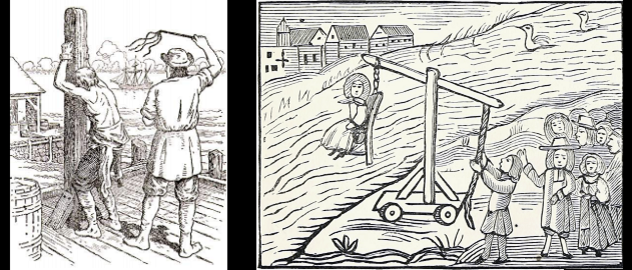Tudor Crime and Punishment
Posted on 23rd January 2021
Punishment in Tudor times was harsh, violent and cruel. It was hoped that the violent nature of it would deter others from committing the same crimes.
It is said that over 70,000 people were executed during the reign of Henry VIII.
Royalty and Nobility
The Star Chamber - Located in the Palace of Westminster and used for the trials of royalty and nobility for crimes such as heresy and high treason. Closed, secret sessions made up of privy councillors and judges. There was no jury, witnesses or right to appeal the decision.
These sessions were used as a political weapon against anyone that opposed the policies and rule of the reigning monarch. As the privy councillors were advisers to the monarch, it was rare for them to decide a case against the monarch’s favour.
Many crimes committed by royalty or nobility included:
High Treason - Betraying one’s country, conspiring to kill or overthrow a monarch or government.
Sedition - Conduct of speech inciting people to rebel against a monarch or state.
Rebellion - Resistance against a government or monarch.
Murder – Unlawful killing of another person.
Heresy - Opinion or belief at odds with established religious beliefs.
Hanging – Being hung by a rope noose or ligature around the neck. Used for the poor for crimes like Murder and Stealing.
These crimes could result in death; beheading by either axe or sword, or the taking of land, titles and wealth.
If there was a public execution, it would be celebrated as a day out by the masses; people would queue over night to get the best view. The execution would be attended by sellers and their wares, including pies, ale and execution memorabilia.
Poor
Other crimes in Tudor history could include:
Hanging - As described above.
Burning at the Stake - Being tied to a wooden stake above a bonfire, set alight. Used for Witchcraft and Treason.
Boiled Alive - A person placed in a cauldron of boiling liquid. This was used in Tudor times for attempted Murder, but was quite rare.
Pressed - Crushed to death.
Branding - Using hot irons to burn letters onto skin to show the crime committed. ‘M’ for Murder, ‘V’ for Vagrancy.
Whipping Post - A person would be chained to a post in the street, stripped to the waist and whipped. This was used for stealing, including food. Stealing could also result in limbs being cut off.
The Stocks - A wooden block with holes in for the feet. A person would be locked into the stocks and people would throw rubbish and rotten eggs at them, and humiliate and ridicule them. These were used for minor crimes.
The Pillory - Similar to the stocks, but the person would be standing with their head and hands locked into a wooden block in the marketplace. Passers-by could then humiliate, jeer at them and ridicule them.
Ducking Stool - A wooden armchair connected to a long wooden beam then fixed as a seesaw on the edge of the river, sometimes it was on wheels with the chair hung by a chain from the end of the beam. The person was strapped into the chair to stop them falling out and It was used as a form of humiliation with many ducking’s taking place.
Ducking was also used when a woman had been accused of witchcraft, but for this a stool was not used. The woman’s right thumb would be tied to her left big toe and she would have a rope attached to her waist. She would be dropped into the water, if she floated she was deemed to be guilty then burnt at the stake, and if she sank, she was innocent, therefore either way resulted in death.
The Brank (Gossip’s Bridle) - Used on women that were too loose with their tongue and liked to gossip. This was an iron structure worn over the head like a cage. A metal strip fitted into the mouth so that any movement of the tongue would cause severe injury.
The Drunkard’s Cloak - A barrel with holes cut out of it for the head and hands, that was placed on a drunk person who was then forced to walk the streets, while being jeered and ridiculed at.
Tagged as: Junior Tudors
Share this post:





